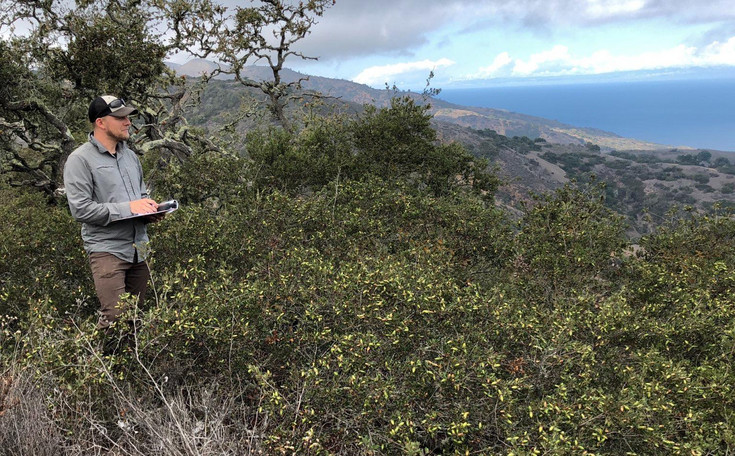18.10.2021 - BOKU Scientist coordinates global investigation of mast-seeding cycles – the heartbeat of the forest

(c) T. Scott Sillett – on the left: Mario Pesendorfer.
Mario Pesendorfer, a researcher at the Institute of Forest Ecology, is lead guest editor of a special issue entitled „The ecology and evolution of synchronized seed production in plants“ in the renowned journal „Philosophical Transactions of the Royal Society B“.
Why do some plants produce extensive amounts of flowers, fruit, or seeds, often synchronized over large areas, in some years and not in others? Many scientific questions about so-called mast-seeding are addressed in the upcoming special issue “The ecology and evolution of synchronized reproduction in plants” in the Philosophical Transactions of the Royal Society B, the world’s oldest journal, in which even Darwin published research. In the issue, 14 studies from leading research groups pursue the question from different angles.
Mario Pesendorfer at the Institute of Forest Ecology (IFE) at the University of Natural Resources and Life Sciences, Vienna, leads an international team of guest editors for the issue. The inspiration arose when an international team of scientists, of which Pesendorfer is a member, assembled a global data base of reproduction time series – an important tool to solve the complex global phenomenon of mast-seeding, which has long been known. “The increased availability of data, combined with understanding of proximate mechanisms of masting, lays the foundation for future forecasting of seed production patterns” explains Pesendorfer. Such forecasts will be an important tool in forest management and restoration, but also in the protection of ecosystems, as the editor group argues in the introduction, lead by Pesendorfer.
This is because the resource pulses created by mast-seeding reverberate through whole ecosystems, affecting population dynamics of seed consumers, their predators, as well as the transmission of zoonotic disease. To date, however, the investigation of such interactions was hampered by the paucity of relevant data – long-term time series of reproduction data.
Trees undergo individual cycles of resource investment into growth and reproduction, but they are synchronized, forming the heartbeat of the forest. The synchrony arises through weather conditions during critical periods of bud formation, flowering, or seed maturation. Thanks to the newly available big data, researchers can now determine the drivers of mast-seeding, or predict how climate change will affect the masting cycles. Evolutionary analyses also provide answers about the selection that may have resulted in masting, and how genetic relatedness among species affects masting.
Masting cycles are also important for humans. In many cultures, seeds and nuts are collected in forests for subsequent consumption of processing. In Korea, for example, the acorn trade is of similar extent as the pecan market in North America or chestnuts in Europe. Even public health is affected by masting, as hospital admissions for tick-borne diseases are often linked to masting in nearby forests. In central Europe, forestry and hunting are affected by the annual cycles. Afforestation efforts, for example, rely on high-quality seed sources in order to raise the number of seedling required to stock logged areas. As many of Europe’s forests are changing composition in response to climate change or after disturbances such as windthrows, avalanches, or wildfires, masting cycles of the desired species will play an important role in shaping the future of the forest communities.
The special issue is available starting October 18th, 2021: https://royalsocietypublishing.org/toc/rstb/376/1839
Contact:
Mag.rer.nat. Mario Pesendorfer, Ph.D.
Institute of Forest Ecology
mario.pesendorfer(at)yahoo.com
+43.676.4600704
